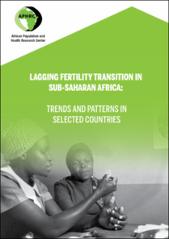| dc.description.abstract | The demographic transition— a shift from high fertility and mortality to low fertility
and mortality— in sub-Saharan Africa (SSA) does not reflect trends in other parts
of the world. The process has been both irregular and slow-paced, with stalls and
even reversals in some countries. Despite SSA’s generally sluggish demographic
transition, the region has the potential to reap the ‘demographic dividend’: the
sustained economic growth resulting from a change in the age structure of a
country’s population associated with the shift in fertility and mortality rates from
high to low. Sustained declines in fertility and mortality produce a population with
a larger working-age group (labor force) relative to the number of dependents,
which can boost the economy if there are employment opportunities and effective
policies. A smaller number of children in a household generally enables more
investments per child and frees up women’s time to participate in employment,
thereby generating more household savings, which can facilitate economic growth. | en_US |

